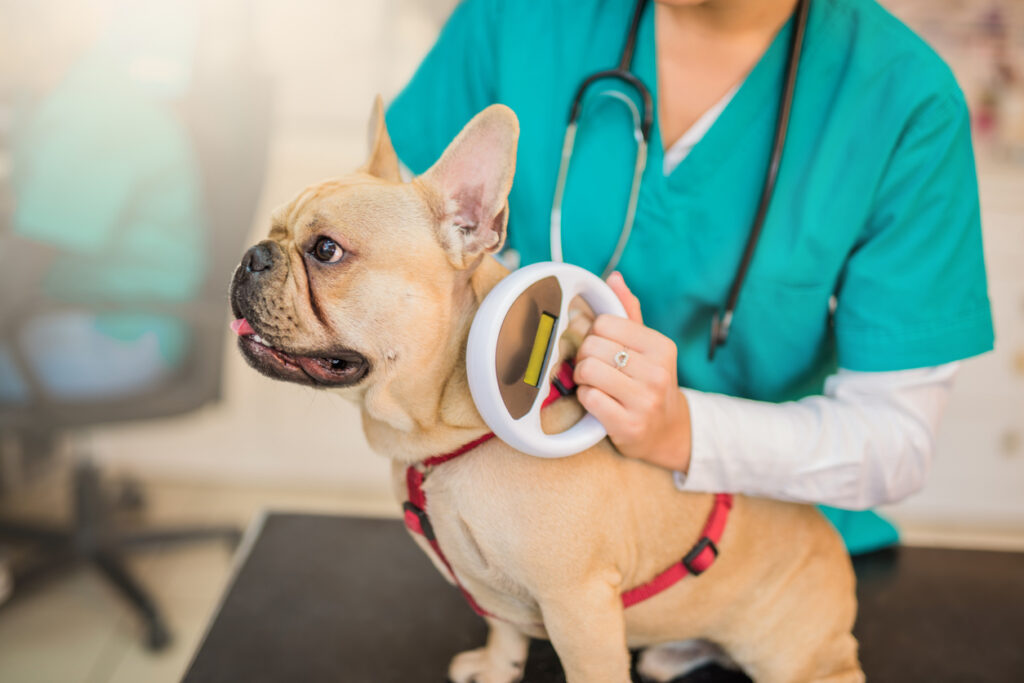A guide to microchipping a dog
Microchipping a dog is not only a legal requirement in the UK but with the recent statistics on the rising tide of dog theft it really is a no brainer of a task to help protect your beloved dog companion. According to statistics compiled by Direct Line Pet Insurance around 2,760 dogs were stolen in 2021 which represents a 16% rise since 2015.
With dog thefts on the rise and criminals targeting dogs to sell them on and make money, it’s increasingly important that a dog owner does they can prove ownership in the event your pet is lost or stolen.
Dogs also get lost and go missing from many different scenarios for instance accidently getting out of a garden, chasing after a bird and losing sight of their humans, slipping their leads on a walk through to bolting because of being spooked by fireworks or being in an un-familiar situation and being scared. There are so many ways a dog even with the best recall can end up getting in a situation where they can become lost.
In this blog article we look at how you microchip a dog, how you then register the microchip, the overall benefits of a microchip and then we look at other methods to keep your dog safe and sound.
How do you microchip a dog?
Microchipping can cost between £10-£15 and can be undertaken by a vet or a vet nurse. Other people can offer this service like some dog groomers, dog walkers but ensure that the person is qualified as your dog might suffer if the person is not properly trained.
All dogs over the age of 8 weeks should be Microchipped according to UK law, rules vary in Wales and Scotland. You can be fined up to £500 in the UK if you don’t Microchip your dog.
Microchipping is a quick procedure and relatively painless, the chip is inserted under the skin using a needle and is only around the size of a grain of rice. Post-implantation it is important to keep the dog calm and quiet for a short period after the procedure to ensure that the implantation site does not become inflamed or infected.
Stainless Steel | TagME Personalised Dog Collar Custom Engraved Slide on Name Plate. Availaible in various colours, multiple sizes. Padded for Comfort, safety reflective to give your dog protection at night with a stainless steel name plate. |
Embroidered | Embroidered Dog Collar Made of extra high quality, durable nylon fabric which is both soft and light. Embroidered with your dog's name and your telephone number. Available in different sizes and colours with areflective area for night time walks. |
How to register a dog's microchip
Once you have a Microchip, then You must make sure that your dog is registered with on recognised database. The following are a selection that all meet government standards, there are a lot more but here is a decent selection:
- Pet Chip Register
- Pet Database
- Pet Identity UK
- Petlog
- PetScanner
- ProtectedPet
- SmartTrace
- Track Your Paws
- UK PETtrac MicroChip Database
- We Trace Pets
Information held on a Microchip database is the dogs unique 15-digit Microchip code, the owner’s name, address, telephone number / landline and email address.
Different reasons to register a dog's microchip...
- Buying a Puppy from a breeder
If you are buying a puppy the breeder should have inserted no earlier than 8 weeks of age and registered the Microchip in the breeders’ details. Selling a dog without a registered microchip is illegal. The new owner then needs the collect proof of the puppy’s microchip and once you have the puppy then contact the database and update to their details.
- Buying a dog / rehoming a dog…
If you are re-homing or buying a dog, please ask for proof a microchip has been fitted before you buy. Proof can be seen on the following documents…
- microchip certificate
- vet records
- pet passport
You may also be able to see microchip information in the dog’s pet insurance papers but it’s down to you as the new dog owner to make sure the microchip details are updated once you have bought the dog and taken it home.
- If you move home…
Once your dog is registered through their microchip into your name then if you move home, it is important that you keep your details up to date as thousands of pets go missing each year and some are not returned as their details are not up to date on their microchip and they have no other form of identification. There is no point registering your dog’s chip if you don’t keep your details up to date!
The benefits of microchipping a dog
Microchipping a dog offers several benefits both for dog and their owner. Here are some of the most important advantages of microchipping:
- Compliance with the law: Microchipping is a legal requirement for ALL dogs over 8wks old in the UK. Failure to comply with this can result in a fine of up to £500.
- Reuniting Lost Dogs: One of the most significant benefits of microchipping is the increased likelihood of reuniting lost dogs with their owners. If a dog goes missing and is found by a warden, shelter, vet or a concerned individual, they can scan the dog for a microchip. The unique identification number can then be used to contact the owner and can conclude in a safe reunion.
- Proof of Ownership: In cases of disputes or theft, a microchip can serve as proof of ownership. By having the dog’s microchip registered under the owner’s name, it provides legal evidence of ownership, which can be useful in resolving ownership disputes or recovering stolen dogs.
- Deterrent to Theft: The presence of a visible microchip can act as a deterrent to potential thieves. Knowing that the dog can be easily identified and traced back to its rightful owner may discourage theft and increase the chances of the dog being returned if stolen.
Remember dog friends, microchipping is only effective if the owner’s contact information is kept up to date in the microchip registry. It is essential to register the microchip and regularly update any changes to the owner’s address or phone number.
Overall, microchipping provides a reliable and permanent method of identification for dogs, increasing the chances of being reunited with lost or stolen pets. It offers peace of mind to owners and helps ensure the well-being and safety of their beloved companions.
Other ways to keep your dog safe...
Collars and Tags
The most common and visible form of pet identification is a collar with an attached tag. The tag typically contains the pet’s name and the owner’s contact information. Collars and tags are relatively inexpensive, easy to obtain and both can be personalised with the owners contact details. However, they can be lost, removed or damaged therefore reducing their effectiveness as a long-term identification method.
The Control of Dogs Order 1992 means that all dogs in a public place must wear a collar and ID tag. You can be fined a whopping £5,000 if you do not comply. There are some exceptions to this rule for instance guide dogs for the blind and dogs used on official duties but on top of microchipping both collars and tags are a great starting point to protect your dog friend and increases the chance of being reunited quickly.
Best Seller | Personalised Engraved Dog Tag Available in 2 sizes 32 & 36mm Pet ID Tags Glitter paw print in various colours including split ring. Personalise with contrasting bold text making the details stand out. |
Highly Rated | Solid Brass Personalised Dog Tag Laser engraved ID tag available in different shapes and sizes. Available in bone shaped, heart shaped, round shaped and star shaped. Order in different sizes for different sized dogs. |
ID Cards
ID cards are personalized cards that contain the pet’s photo, name, owner’s contact information and sometimes additional details such as medical conditions or vaccinations. These cards can be carried in a wallet or purse, providing a convenient way to have identification information readily available. However, ID cards are not as widely recognized as other forms of identification and may not be as effective if your dog becomes lost.
GPS Tracking Devices
GPS tracking devices are becoming increasingly popular for pet identification and tracking. These small devices can be attached to a pet’s collar and use GPS technology to track their location in real-time. Pet owners can monitor their pet’s whereabouts through a smartphone app or website. GPS tracking devices are especially useful for active dogs with a tendency to wander. However, they require a power source (usually batteries) and may have ongoing subscription fees. Check out our blog all about GPS Tracking Devices for dogs.
QR Code Tags
QR code tags are a newer form of identification that uses Quick Response (QR) codes. These tags can be scanned with a smartphone or QR code reader, providing instant access to the pet’s information and owner’s contact details. QR code tags are customisable and can include vital information such as medical conditions or special needs. They are a convenient and versatile method of identification but rely on the person finding the pet to have access to a QR code reader.
It is important to note that while all these identification methods can be valuable, they are most effective when used in combination. For example, microchipping provides permanent identification, while collars and tags offer visible identification for immediate recognition. It is recommended to use multiple forms of identification to increase the chances of a lost pet being reunited.
latest articles
Lorem ipsum dolor sit amet, consectetur adipiscing elit. Ut elit tellus, luctus nec ullamcorper mattis, pulvinar dapibus leo.








